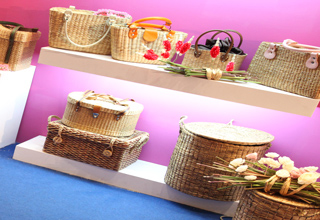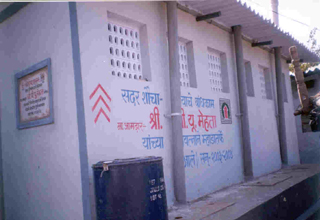Handicraft exporters call for additional support from the government
Updated: Sep 20, 2013 02:10:02pm

New Delhi, Sept 20 (KNN) Indian handicrafts for centuries, have been popular the world over for their fascinating colours and designs. Not only does each state have its own legacy of handicrafts, the exotic pieces of art are a reflection of the glorious traditions handed down through the ages.
From blue pottery to intricate metal craft and textiles, jewellery and woodcraft to leatherwork, the various crafts have been perfected over centuries and kept alive by skilful artisans.
However, although the Indian handicraft tradition is as diverse as the cultural diversity of the country and has a large production base, its market at an international level remains unexplored, owing to which its share in the world handicraft exports is less than two per cent.
To enable the Indian handicraft exporting community to develop and upgrade itself so it can take a lead in the world market, a two day international seminar on promotion of Indian handicrafts and craft exchange programme was held here recently.
Handicraft exporters who attended the seminar, while being delighted to attend the first of its kind programme, called for additional measures from the government to help boost their exports.
“We need good units for plating, casting, testing and other incentives,” said costume jewellery exporter, Simrandeep Singh Kohli of Sehaj Impex from Delhi NCR.
Having been in the business for over four decades, he exports to big brands such as Aldo, Cost Plus and many more across the world.
According to Kohli, the existing units for plating and casting in the NCR are very small and unable to accommodate the volume of products that need processing.
Further, his jewellery items need lead testing, nickel free testing, cadmium testing and reach testing. With 20-30 components requiring testing and each costing anywhere between Rs 1000 and Rs 4000, it is certainly an expensive procedure.
“We also require certification from testing and inspection companies such as SGS, Intertek and Bureau Veritas. The government labs which offer this facility are far too expensive,” Kohli said, urging the government to offer incentives.
When each of his products cost on an average USD one to five in the international market, having to spend around Rs 25,000 to Rs 80,000 for testing, is a loss to his business.
Meanwhile, owner of Mir Handicrafts Private Limited, Arshad Mir who exports carpets and scarves is of the opinion that the government should support exporters in their marketing strategies.
“The government should explore and find new markets. South America is a far larger market than North America and there are hardly any stores there that sell Indian products. It can organise trade shows in Brazil, Venezuela, Argentina, etc. Perhaps in Africa too,” Mir said.
In India, according to Mir, artisans are involved in system oriented crafts that are unable to deliver on time. “We need more clusters, better infrastructure and new techniques for traditional craft,” he said.
However, for soon-to-be exporter Mamta Sehgal who deals with hand embroidery, the handicraft exchange programme was an eye opener. Although she is aware of procedures for export of her embroidered products, as also the formalities, she was delighted to interact with other artisans and exporters.
“We should have more such events that provide opportunities to promote our products and learn from others,” she said.
The event was organised by the Office of Development Commissioner (Handicrafts), Export Promotion Council for Handicrafts (EPCH) and National Centre for Design and Product Development (NCDPD).
It saw the participation of eight international experts from China, Vietnam, Philippines, Japan and Ireland who interacted with the industry, even as they shared their success stories and discussed areas of mutual cooperation and transfer of techniques.
Live demonstrations of craft skills and techniques of artisans from China, Vietnam, Philippines, Thailand and India were organised at the venue.
It enabled close interaction between craft persons of other countries on techniques and methods adopted for production, design, design development, packaging and market linkages. (KNN/ES)








